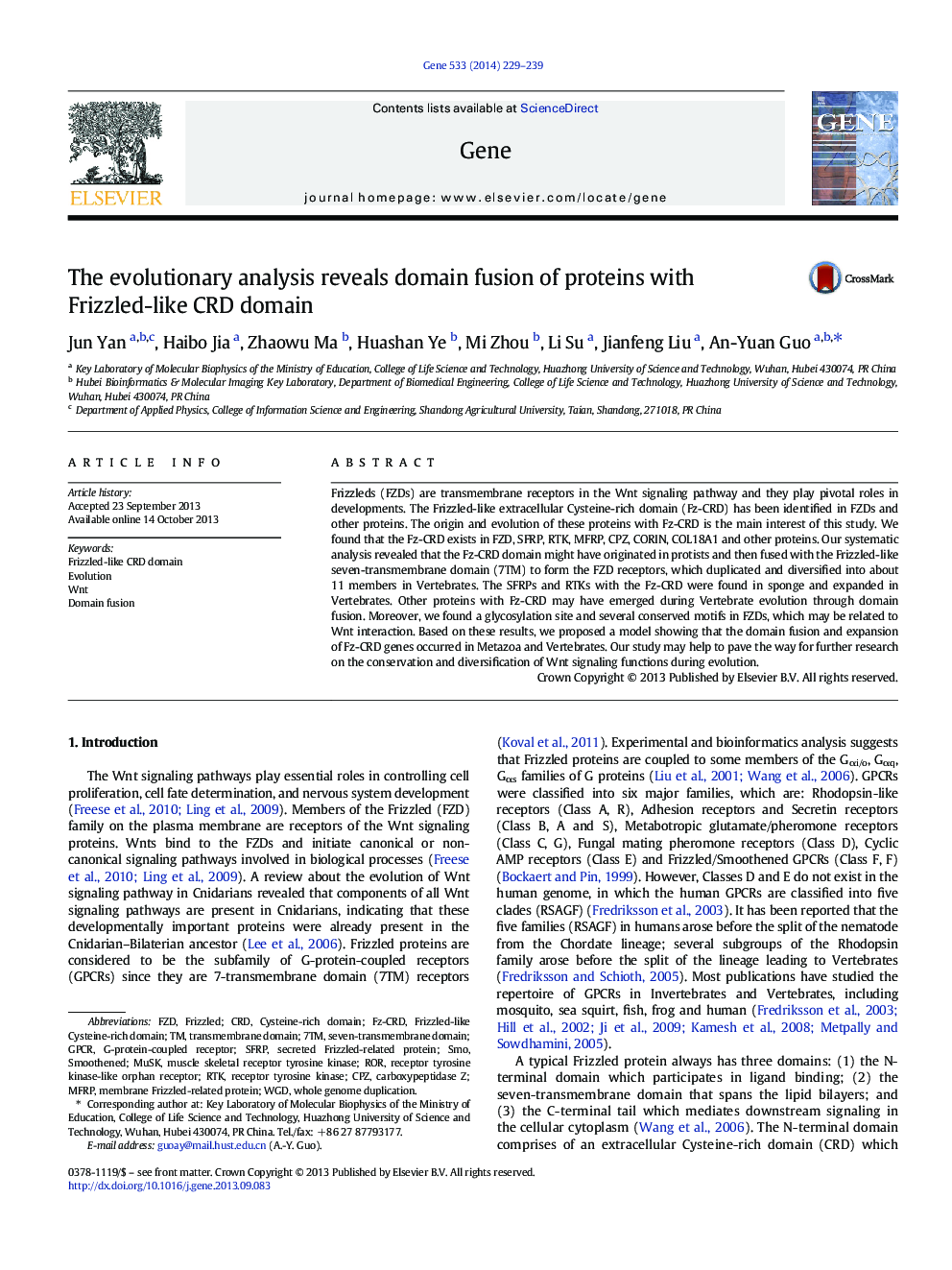| Article ID | Journal | Published Year | Pages | File Type |
|---|---|---|---|---|
| 2816728 | Gene | 2014 | 11 Pages |
•Fz-CRD has been identified in FZD, SFRP, RTK, MFRP, CPZ, CORIN, COL18A1 and others.•Phylogenetic analyses of these proteins with Fz-CRD were performed.•A glycosylation site in Fz-CRD, which may be related with Wnt interaction•A model shows the domain fusion and expansion of Fz-CRD in Metazoa and Vertebrate.
Frizzleds (FZDs) are transmembrane receptors in the Wnt signaling pathway and they play pivotal roles in developments. The Frizzled-like extracellular Cysteine-rich domain (Fz-CRD) has been identified in FZDs and other proteins. The origin and evolution of these proteins with Fz-CRD is the main interest of this study. We found that the Fz-CRD exists in FZD, SFRP, RTK, MFRP, CPZ, CORIN, COL18A1 and other proteins. Our systematic analysis revealed that the Fz-CRD domain might have originated in protists and then fused with the Frizzled-like seven-transmembrane domain (7TM) to form the FZD receptors, which duplicated and diversified into about 11 members in Vertebrates. The SFRPs and RTKs with the Fz-CRD were found in sponge and expanded in Vertebrates. Other proteins with Fz-CRD may have emerged during Vertebrate evolution through domain fusion. Moreover, we found a glycosylation site and several conserved motifs in FZDs, which may be related to Wnt interaction. Based on these results, we proposed a model showing that the domain fusion and expansion of Fz-CRD genes occurred in Metazoa and Vertebrates. Our study may help to pave the way for further research on the conservation and diversification of Wnt signaling functions during evolution.
Graphical abstractFigure optionsDownload full-size imageDownload high-quality image (150 K)Download as PowerPoint slide
